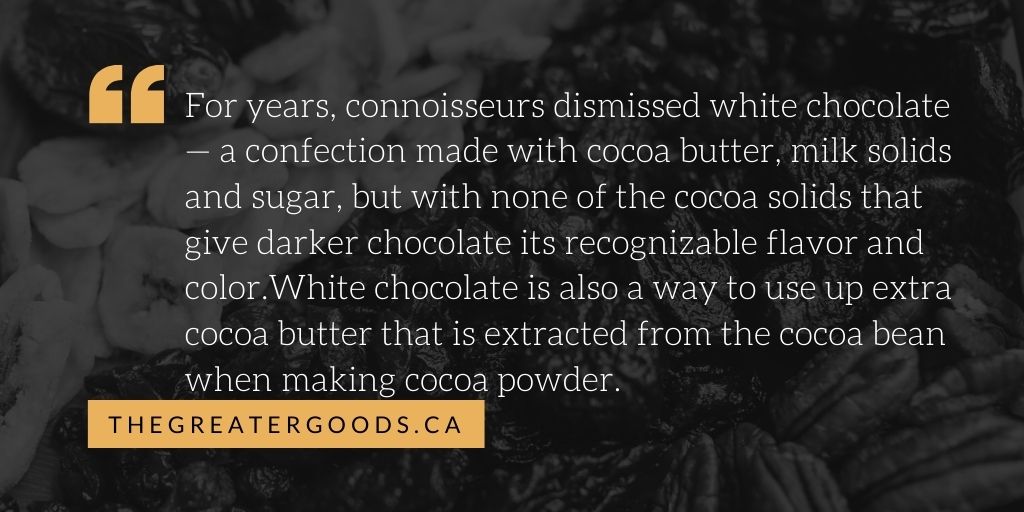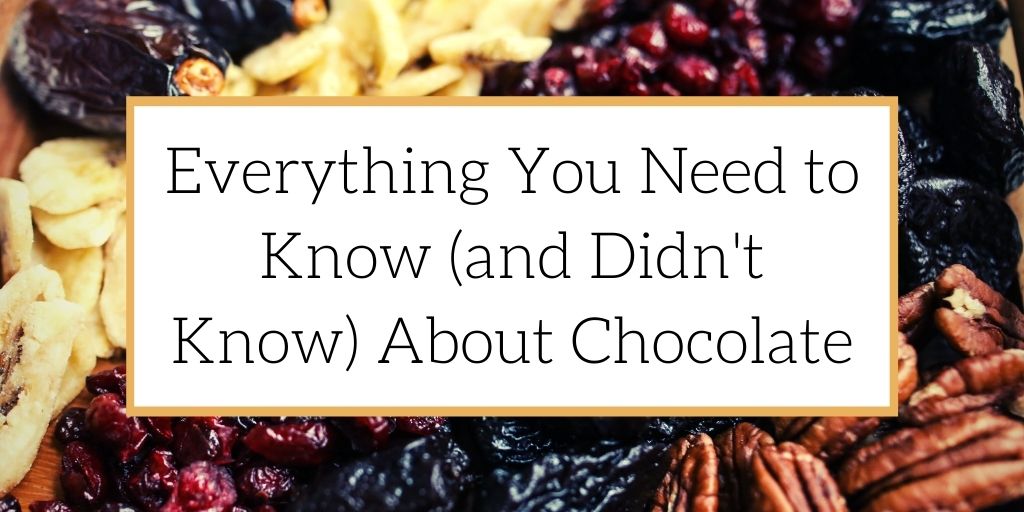Chocolate is more than just a dessert. Chocolate is a versatile ingredient that can be used in all different types of food. But chocolate can sometimes get a bad reputation as being a highly processed ingredient that has a high sugar content when, in fact, not all chocolate is the same.
Milk chocolate, semi-sweet chocolate, bittersweet chocolate, dark chocolate, and white chocolate are all variations of chocolate. Each type of chocolate has its own procedure that it must follow when it is processed. The process, the amount of cocoa used, and any additional ingredients are what determines the type of chocolate that is made.
How Chocolate is Made
Chocolate comes from a cocoa bean that is found in South America. The cocoa beans are harvested by removing the large pods on the trees and breaking them open to access the seeds. The seeds are then removed from the pod and laid out to dry up to a week. Drying causing the seeds to ferment which is what causes the chocolate aroma and flavor.
The beans are then cleaned, roasted, and removed from the hull, leaving what we know as chocolate. The chocolate is then crushed under rollers to create a paste. The paste is created from the cocoa butter of the bean and is used to produce all types of chocolate.
Unsweetened baking chocolate is made at this stage and is considered the most pure form of chocolate because it does not have any additional ingredients combined with it. It is simply the paste of the chocolate that has been solidified into a bar with no added ingredients.
Sheela Prakash at thekitchn.com describes unsweetened baking chocolate by saying, “Baking chocolate, in its most traditional form, is unsweetened chocolate. That means it’s 100 percent chocolate liquor (aka processed and ground cocoa beans) without any added sugar or flavoring, so it’s extra bitter and extra unpleasant to bite into. Unsweetened chocolate is meant to be used in a recipe where you’re using enough sweeteners to counter this bitterness.”
Cocoa Requirements in Chocolate
There must be a minimum percentage of the chocolate that is cocoa mass in order for chocolate to be labeled chocolate. The cocoa mass is the chocolate paste that is produced when chocolate is ground, so chocolate must contain a minimum percentage of cocoa mass in order to be classified as chocolate.
In the United States, the minimum requirement of cocoa mass in all chocolate is 10%, and the percentage increases depending on the type of chocolate that is being made.
Bittersweet, milk chocolate, and white chocolate manufacturers all have to follow the same standard of measurement if they want their product to be labeled as chocolate.
Melissa Clark at the New York Times discusses the requirements of cocoa mass in chocolate when she explains, “In order for something to be labeled chocolate in the United States, it must be at least 10 percent cacao mass. Most milk chocolate is 10 to 30 percent cacao; most bittersweet chocolates, 35 to 55 percent. (For white chocolate, only the cocoa butter is used, and it must constitute at least 20 percent of the bar.)”
Is White Chocolate Really Chocolate?
Yes, white chocolate is really chocolate as long as it meets the minimum requirement of cocoa butter that classifies it as chocolate.
When cocoa beans are ground and chocolate liquor is created (also known as chocolate paste), the paste is made from the fat of the cocoa bean. This is called cocoa butter.
When cocoa butter is extracted from the paste, it is combined with milk solids, milk fat, sugar, and lecithin. It is then solidified into a bar to create smooth, sweet white chocolate.
In order for white chocolate to be classified as chocolate in the United States, it must contain at least 20% cocoa butter. White chocolate is a way to put excess cocoa butter to use. Sometimes during the grinding process, there can be a surplus of cocoa butter that needs to be put to use. Creating white chocolate makes this happen.

Contact The Greater Goods today to book a free consultation so that we can discuss all things chocolate to help grow your business. We are happy to help your business capitalize on this profitable and successful industry, and we have the skills and resources to do it.
